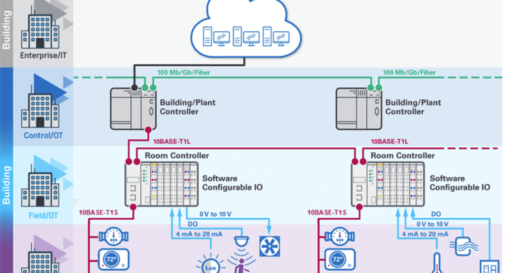5G technology making inroads into mmWave, automotive and IoT

It is quite possible that 5G eventually swallows a large portion of the IoT and automotive markets as well. Such a broad reach would encompass multiple standards from low sub 700 MHz frequencies through to mmWave frequencies, such as 28 GHz and 60 GHz.
For example, the recently announced Qualcomm Snapdragon X50 will initially support operation in millimeter-wave spectrum in the 28 GHz band. It also employs MIMO antenna technology with adaptive beamforming and beam tracking techniques, which facilitates robust and sustained mobile broadband communications in non-line-of-sight (NLOS) environments. Bandwidth support up to 800 MHz enables peak download speeds of up to 5 gigabits per second.
However, the modem also supports LTE as Qualcomm see Gigabit LTE as an essential pillar for 5G, as it can provide a wide coverage layer for nascent 5G networks. LTE is also one means to addressing the IoT and automotive markets.
Recently, Telstra and Cohda Wireless successfully trialled Vehicle-to-Infrastructure (V2I) technology over Telstra’s 4G network in South Australia, a pivotal first step in developing Vehicle-to-Everything (V2X) technology.
Telstra believes its 4G and future 5G networks can play a vital role in supporting the faster rollout of intelligent transport systems and V2X applications, making implementation of the technology cheaper and more efficient. Telstra’s Director of Technology Andrew Scott said that the successful V2I trial marked the first phase of Telstra’s plan to show how V2X technology can be supported via Telstra’s 4G network.
However this is only the first phase of the project with additional trials lined up for testing Vehicle-to-Vehicle and Vehicle-to-Vulnerable (bicycles and pedestrians).
Taking a separate road, a cross-industry alliance of Audi, BMW and Daimler along with telecommunications equipment providers Ericsson, Huawei and Nokia as well as semiconductor vendors Intel and Qualcomm will bundle their R&D resources to evolve, test and promote 5G communications for connected mobility.
称自己为“5克汽车协会”, the 5G mobile networks the partners plan to roll out will also include V2X applications – but not on the basis of the widespread IEE 802.11p standard currently favored by many players, but instead based on mobile networks, cloud connectivity and cellular connectivity (C-V2X). The partners believe that 5G will end the current bandwidth bottleneck in today’s networks and offer shorter latency, enabling better support for mission-critical functions for safer driving and enhanced vehicle-to-everything communications.
“We expect 5G to become the worldwide dominating mobile communications standard of the next decade”, said Christoph Grote, Senior Vice President Electronics at carmaker BMW. “For the automotive industry it is essential that 5G fulfils the challenges of the era of digitalization and autonomous driving.”
Turning to the IoT, two carriers in the USA and a group of module makers will use a Qualcomm chip implementing the latest low-power LTE standards for the Internet of Things.
AT&T plans to pilot a LTE-M (formerly known as Cat M1) network and module technology in the San Francisco market starting in November and launch the technology across their commercial LTE network in 2017. In this pilot, the Qualcomm MDM9206 modem will help deliver new, intelligent and cost-effective IoT services, and use cases to industrial, commercial and smart cities customers.
Verizon is integrating the MDM9206 modem with its Thingspace IoT platform to accelerate the delivery of connected services specifically tailored for rapidly growing markets like smart metering for utilities including electric, gas and water.”
The module makers, which include Quectel, Telit, U-Blox, Simcom and Wistron NeWeb Corp., are all planning to use the MDM9206 in modules supporting Cat-M1 and NB-1 services. Module OEMs are expected to launch MDM9206-based Cat M1 capable modules in early 2017. A software upgrade for Cat NB-1 is expected to be available shortly thereafter.
To conclude we see advances in LTE blurring into 5G technology and an almost certain role for LTE in a future 5G world for quite some time. As 5G takes on the role of an all pervasive communications fabric, encompassing everything from cellular to automotive through to the IoT.
Related articles
Carmakers, telecommunications players join forces for 5G development
First 5G modem to usher in next-gen cellular
Report illustrates the details of 5G mm-wave radios
新的无线技术实用mm-wave的承诺high-speed communications
3GPP IoT standards to dominate cellular IoT radio, says report
5G: the wireless network that adapts to user’s needs






